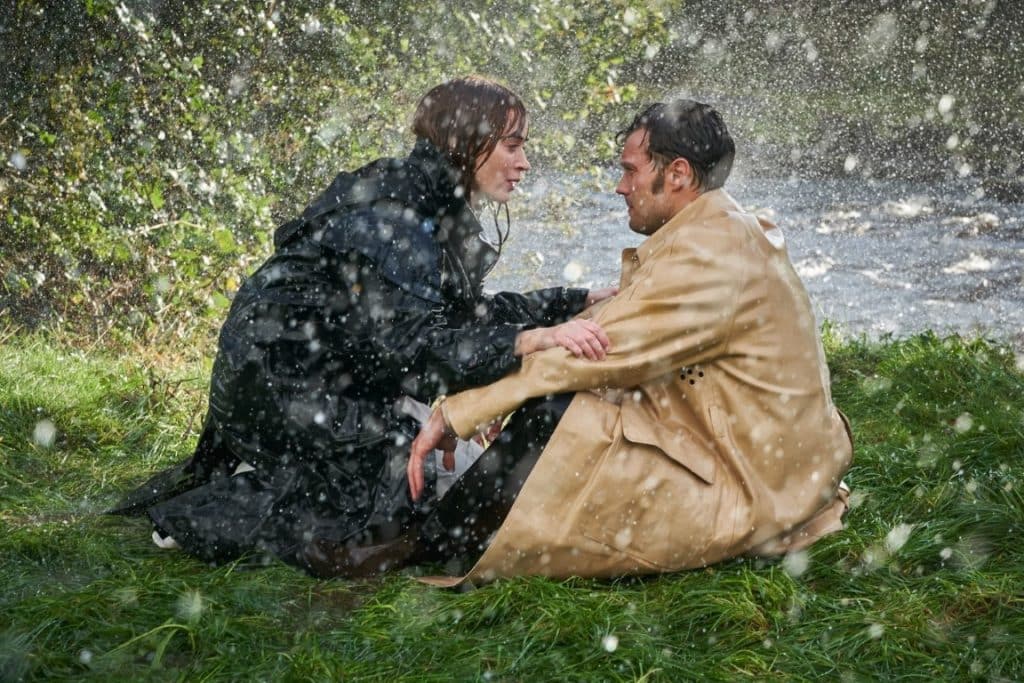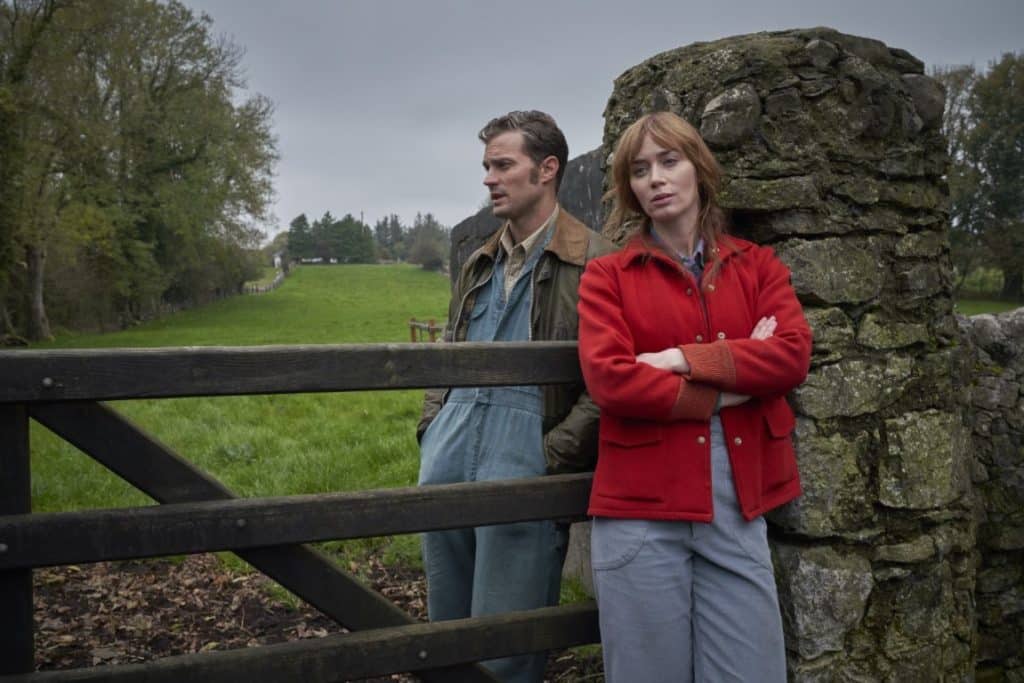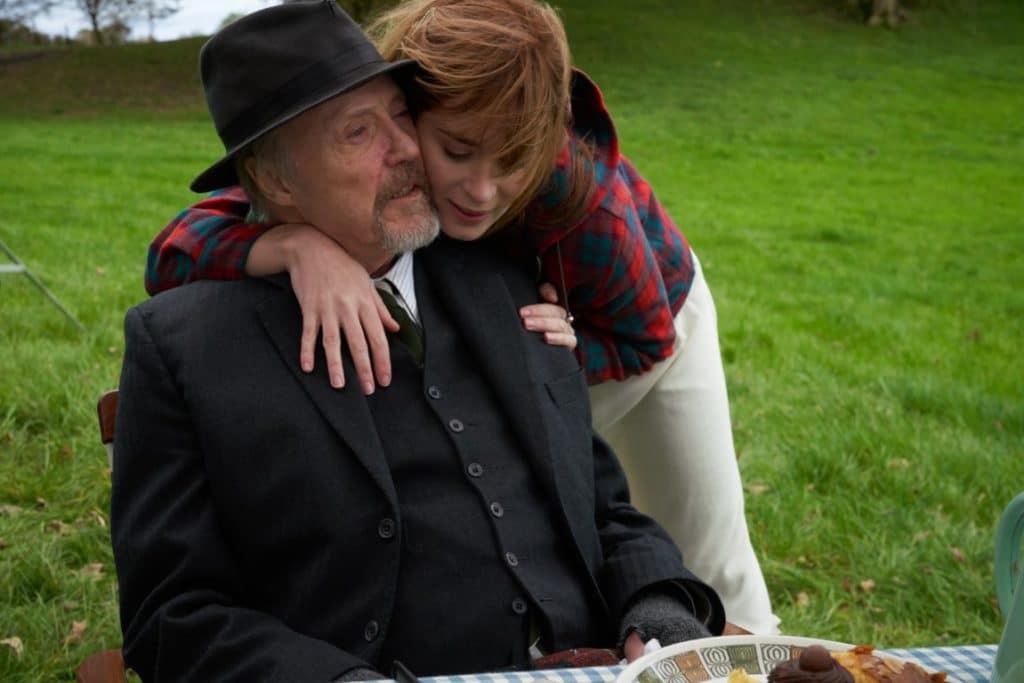Read also:
How to Watch FX Live Without CableHow To Watch AMC Without CableHow to Watch ABC Without CableHow to Watch Paramount Network Without CableThe filmmaker talks to us about his latest film, the public’s reaction to its accents, and the controversies surrounding its final moments.
In 1988, John Patrick Shanley won an Academy Award for Best Original Screenplay for Moonstruck, the charming and whimsical romantic comedy starring Cher and Nicolas Cage as two star-crossed lovers in Brooklyn that become inextricably linked together. Two years later, Shanley wrote Joe Versus the Volcano, a film that also marked his directorial début. More than three decades later, Shanley, now 70, returned to the genre to helm the production of Wild Mountain Thyme, the film adaptation of his hit Broadway play Outside Mullingar.
Set in the glorious greenery of the Irish countryside, the film, which premiered in theaters and on-demand on December 11, stars Emily Blunt as Rosemary Muldoon—an intelligent, headstrong farmer that has been in love with her oblivious, off-kilter neighbor Anthony Reilly (Jamie Dornan) for nearly three decades. As Rosemary attempts to break the pair’s indefinite stalemate, the future of the Reilly farm hangs in the balance when Anthony’s father, Tony (Christopher Walken), reveals his plan to sell the estate to a wealthy American nephew named Adam (Jon Hamm).
In a recent interview with The Spool, Shanley opens up about the process of casting Blunt and Dornan as the two romantic leads, the tall order of directing a star-studded cast in rural Ireland and the harsh criticism that the film has received for its depiction of a localized Irish accent.

Take me back to the end of your successful run of Outside Mullingar on Broadway. Did you always know that you wanted to bring the play to the big screen? What prompted that decision?
JOHN PATRICK SHANLEY: Well, when we did the play on Broadway, one night a woman named Leslie Urdang, who had produced a lot of my early work in theater, went with some of her friends and saw Outside Mullingar. She called me up after and said, “I think this should be a film.” And I said, “Actually, I think so, too, because we’re faking that it’s Ireland in New York.” It’d be great to actually go to Ireland and have the actual farms and animals and the whole world of Ireland as part of the story. (Urdang later served as a producer on this film.)
I think that a lot of people would just like to go there in a film. They’d just like to get away from [a time like] now. It took a while, but as it turned out, I think the movie’s being released at a moment where the entire world has cabin fever.
What were some of the biggest challenges that you faced as a director and screenwriter when bringing this work from the stage to the screen?
SHANLEY: Well, I chose to see the biggest challenge as a big plus, and the biggest challenge was the weather. I just told the cast and the producers and everybody else from the top, “We have all of these things in the script [that say] it’s a beautiful day or it’s a rainy day. I just want you to know that whatever weather is going on that day—not only are we going to shoot, but that’s the weather that I meant for it to be.” (Laughs.)
We did one scene where it was supposed to be a beautiful day in the script and it was raining! So, in that scene, Emily’s character says, “How many days do we have while the sun shines?” And I told Jamie to say, “It’s not shining.” (Laughs.) And I told Emily to say, “Well, I believe that it is.” That actually turned out to be one of my favorite exchanges in the film, but I came up with it five minutes before we shot it because I was dealing with the realities of the day, and that can be exciting to do. They were also almost being drowned out by screaming crows in the beginning of that scene, so I wrote some dialogue about how the crows were very active that day, and what that meant in terms of the story. It was kind of fun to deal with it.
How did you manage to help this project find its own voice while also staying true to the original spirit of the play?
SHANLEY: Since I wrote the play, the spirit that inhabited me while I wrote the play continued to linger when I wrote the screenplay. It wasn’t that hard to maintain the tone. My point of view is mine—for better or for worse. It’s idiosyncratic, and I write dialogue that has a certain stamp to it. My father was an Irish immigrant and came to this country when he was 24, and I grew up with him, his brothers and other relatives who sang Irish songs all the time and played the accordion. So, that music carried me from the play to the screenplay to the directing of the film.

You’ve spoken extensively about the process of casting this movie, but did you always know that you wanted Jamie Dornan to star as the male lead? When did Emily Blunt come into the picture?
SHANLEY: Jamie Dornan was the basic tent pole around which I built the casting of the film. I first described in the abstract what I was looking for. I was looking for a dark, brooding romantic lead—I knew it was too much to hope for, but I just said it, also Irish—who you believe is significantly introverted. And that turned out to be Jamie Dornan and nobody else from the planet. (Laughs.) He was the one movie star that actually fit all of the requirements. So, I knew that I wanted him and I pursued him, and he was with us from the start.
Emily came in at the eleventh hour. We had another actress [Holliday Grainger], another schedule change and she couldn’t do it. I said to the producers, “Well, you know, you could try for Emily Blunt. I’d certainly be happy to have her.” But I never for a minute thought she would say yes. She was in within a couple of days, and she called and said, “I really want to do it.” So, I was taken aback.
Then, the next day, Chris Walken called and said, “I want to do it.” I was like, “Okay! Here we go…” (Laughs.)
What do you think makes them so perfect for their respective roles?
SHANLEY: Well, I think that they’re both very substantial people and I think that Jamie really is, in his own way, introverted. I think that Emily is, in her own way, extroverted, though quietly so. They’re both fiercely intelligent and passionate. I actually had no doubt whatsoever that they were going to be a great couple because in the story, the roles are kind of reversed.
In a way—and I hope Jamie doesn’t take this the wrong way—[Anthony] is the girl and [Rosemary] is the guy. (Laughs.) She’s pursuing him and he’s running [away] as fast as he can, and it’s the work of the movie to get them together.
In addition to Jamie and Emily, you also got the chance to work with Dearbhla Molloy again, who was part of the Broadway production, as well as Jon Hamm and the legendary Christopher Walken. What was it like to direct Chris Walken for the first time?
SHANLEY: Well, I knew Chris a little. I’d done a workshop with him down at The Public Theater [in New York City] but that was a million years ago. I never mentioned this when I was working with him, but I was so intimidated to be directing Chris Walken that I walked into the rehearsal room [at the start of production] and the cast was all sitting there, looking at me, and I said, “You know, I don’t really remember what I was thinking when I wrote this play.” And Chris Walken said, “Oh, no,” and he started to explain the play and basically saved my ass. (Laughs.) But I also think he recognized that I was just being very genuine, and that’s the only thing that Chris really needs from other people. He needs nothing fake.
When we did this project, I just recognized I was dealing with a very sensitive actor, and by that I mean, a person that can sense my reaction to everything that he’s doing in his performance. So, he actually said, “Can you hide?” I wouldn’t show anything as far as I knew, but he thinks even seeing my face would actually distort for him what he was actually doing. So, I directed for three days [on indoor sets] from a closet, and those were the first three days of shooting! (Laughs.) But I understood that. I’ve spent my whole life working with actors, and we gave each other plenty of space the whole time we were shooting, and the day we wrapped up, we went out to dinner and we had a grand time.

Out of all of the scenes in the movie, it was Anthony’s big reveal that he thinks he’s a honeybee that caught me the most off-guard. I have to ask: Is there a hidden meaning behind the honeybee metaphor? What made you want to add that strange twist to an already eccentric production?
SHANLEY: Well, first of all, with most of my work, if people were to ask me, “What’s the theme?” I wouldn’t know how to answer that question. (Laughs.) But this one, I can, and it’s very simple. Emily Blunt’s character says it towards the end of the movie: “Everybody thinks they’re somebody they’re not.”
The funny thing is, of the many people that I’ve talked to who’ve seen the film, some of them are like, “Wow, I can’t believe what Anthony reveals at the end.” And I said, “The funny thing is nobody seems to find it odd that [Rosemary] thinks she’s a bird, but everybody finds it odd that [Anthony] thinks he’s a bee. What’s the difference?!” (Laughs.)
I guess the difference is her illusion makes her expand, and his illusion makes him withdraw to a private place. He’s filled with fear to share it. He had an early bad experience of telling a girl and she ran away, so he thought he would never be loved if he told the truth about himself, and I think we have all experienced that at some time or another.
You called this film your love letter to Ireland, and you got to spend over five weeks filming in the Irish countryside. What was your favorite part of that experience?
SHANLEY: Just actually being in the natural beauty of Ireland when you’re shooting a film. You get up in the dark and you’re out there in every kind of weather. I saw the moon erupt out of the top of a mountain while I was doing a night shoot, and I thought, “This is like no place on Earth. This is a magical place.”
It’s an island of under six million people, and just imagine the extent of the influence they’ve had on the Western world, if not the whole world. I got to, on a daily basis, just come up against this incredibly welcoming quality that the Irish people have, and also, the way that they defend themselves from being categorized. I knew I was going to get a lot of heat for making the movie at all because the Irish don’t like you to talk about them. (Laughs.) So, I knew that was coming, but nevertheless, it made me laugh.
Speaking of everything that you knew was coming, this film has also received, what I feel is, some very harsh criticism for its interpretation of accents. What are your thoughts on that and what do you think it really says about the Irish?
SHANLEY: When I first talked to Emily, I said to her, “We are not making this movie for the Irish. If you try to get them to love you, you are doomed to tragedy. If you don’t care whether or not they love you, they may come to like you a bit.” (Laughs.) So, that’s what you’re dealing with. It’s an ancient tradition to defend the island against newcomers, and I understand it. I’m amused by it, but at the same time, it still makes me shake my head. It’s a great country.
This interview has been edited and condensed for clarity.